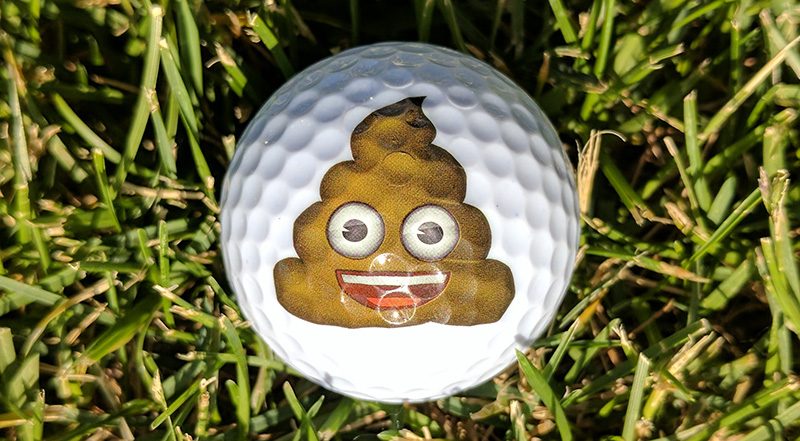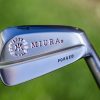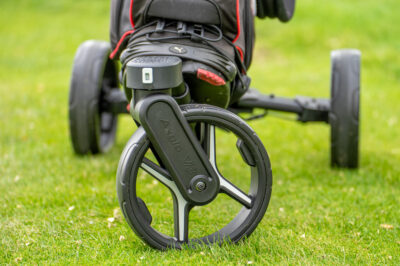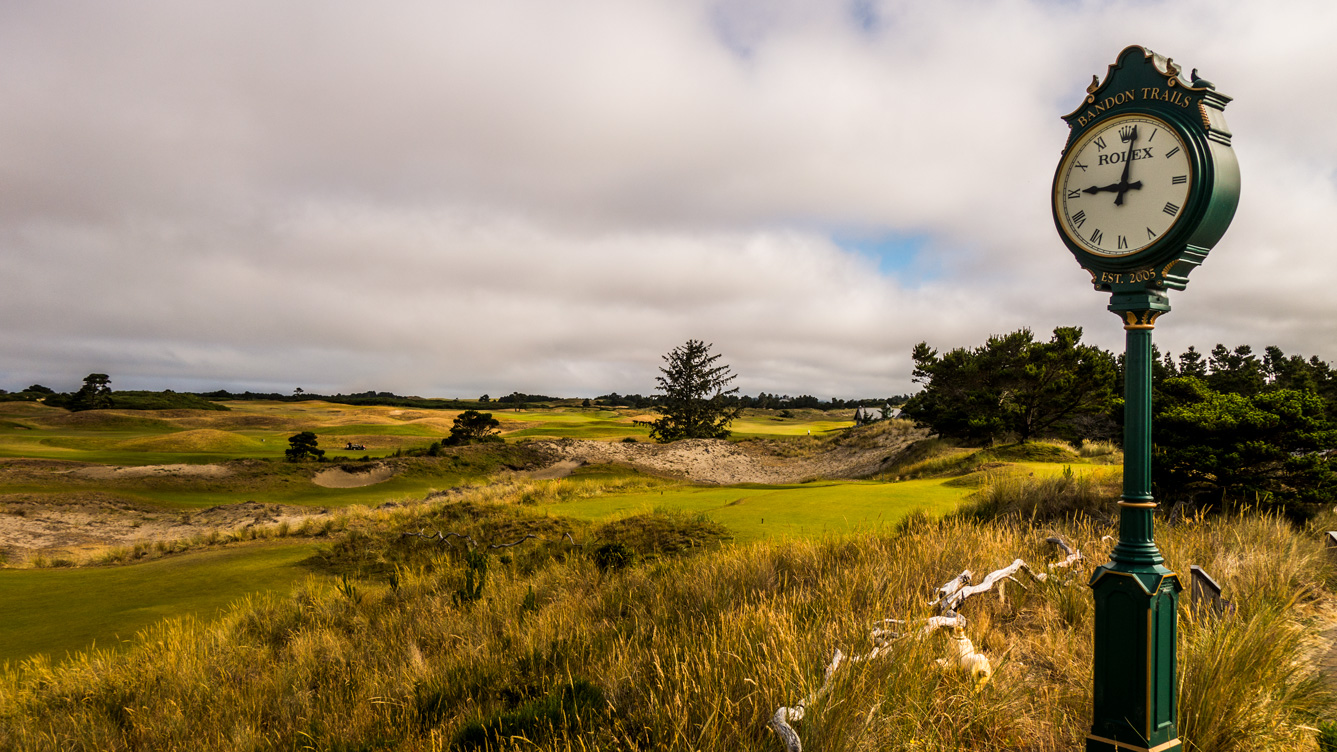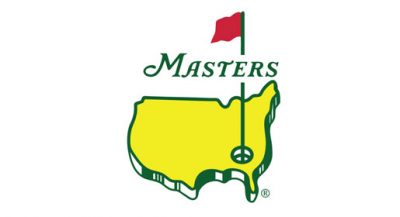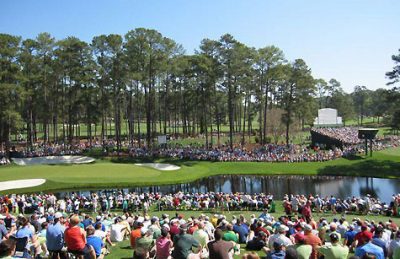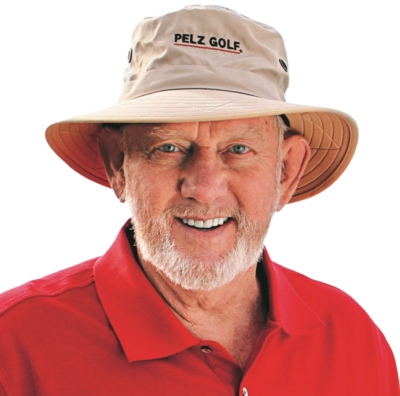Roll It Back – Golf’s Mythical Distance Problem Isn’t Just the Golf Ball
Categories: Golf • Golf Rules and Regulations • Miscellaneous • PGA Tour • Pro Golf • Rory McIlory • Tiger Woods • USGA
Tags: Dustin Johnson • Golf Ball • John Daly • Rory McIlory • Tiger Woods
Distance has apparently become a real problem. I know I have too much of it. Don’t you? Golf courses are too short now, and many have to spend millions to make a their holes more challenging for .00000000000003% of the golfers on the planet. Why? Most think this “problem” is just the golf ball. This ball distance talk has heated up this year, especially after Dustin Johnson nearly made an ace on a 400 yard par-4 in Kapalua. People got all amped up about the ball going too far with no mind what the conditions were (downwind, downhill, hard ground). I’ve hit a 430 yard drive, in the mountains, on hard ground, with a heavy tailwind. I hit about a 520 yard drive also. It hit the cart path about 20 times. Roll back cart paths!
Bifurcation
The subject of bifurcation seems to be making a comeback this year. Bifurcation in golf is the splitting of the golf ball into two different models: a “tournament ball” which the PGA Tour players would use, and a regular ball that Joe golfer would use. The tournament ball would be limited more in its distance than the regular ball.
I’m not a fan of bifurcation, and surely the golf manufacturers aren’t. The reason that 300 yard drives are impressive is because it takes some skill and athleticism to make it happen more than just a rare lucky swing. When I get ahold of one and hit it as far as Dustin Johnson, Rory McIlory, or Tiger Woods, I get excited.
Hitting a big drive is fun. That’s one of the few things that can help me stay interested in golf. How can I compare myself to those great golfers if I’m playing a different ball? Aspiring to hit shots like those pros is part of the fun, and the challenge.
Roll Back The Ball
Instead of bifurcation, some think all golf balls should be “rolled back.” Haha nice pun. The golf ball should be put back to a maximum distance number that’s in some golf governing body members’ heads, a distance shorter than it goes now. What distance? What’s fair?
This theory REALLY takes the fun out of it, and all it will do is make golf harder for those who don’t hit it far, most amateurs and Corey Pavin.
Rolling the ball back certainly wouldn’t help the golf equipment industry. It would pretty much kill every golf ball advertising and PR campaign theme since the beginning of golf balls, “this ball is longer!” What would the companies advertise if the ball is rolled back? This ball is the longest best rolled back ever!
What Else Should Golf Roll Back?
The problem with distance, if one actually thinks it is a problem, isn’t just the ball. There are many, many other factors involved in how far the golf ball travels these days. PGA Tour golfers are no longer out-of-shape pot-bellied smokers who drink booze all night, don’t work out, don’t have extensive teams of trainers and coaches, and don’t practice. Well, other than John Daly. PGA Tour golfers work out like crazy, have incredible flexibility, and have some of the most amazing advances in technology behind their swings and their gear. I’m not talking about just the golf ball. Here’s list of a few of the things professional golf would have to roll back other than the ball, though I’m sure there are some I’m missing.
Fitness – First, we will have to roll back fitness. Pro golfers today are super-fit (usually). Roll them back from the gym.
Flexibility – We must find ways of making today’s golfers more stiff and less flexible. No more yoga. No more flexibility training. Roll it back.
Personal Trainers – Speaking of training and fitness, part of that whole combo includes personal trainers. They’ll have to go.
Dietitians – Part of the fitness component is dietitians. Golfers who eat better can be more flexible and strong. Roll back the dietitians. Go back to the food pro golfers ate in the 50’s (except probably Gary Player). Make ‘em all eat fatty diets with lots of carbs! No more kale. Roll them back from precisely calculated sports diets to greasy burger
Golf Coaches – Golf coaches will certainly have to be rolled back.
Golf Shaft Technology – Shafts are as much to blame for distance as the golf ball. They’re waaaaay too good these days. Shafts must be rolled back.
Driver Head Technology – Driver head engineering is certainly a distance culprit. What is it this year? Jail face break twist technology I think. Roll back the drivers!
Swing Analysis & Launch Monitors – 99.9% of tour players utilize launch and swing analysis to optimize their swing, their shafts, their launch angles, spin rates and so on. Launch monitors have a huge impact on today’s distance problem. No more launch monitors. Roll ‘em back.
Golf Grip Technology – Golf grip technology certainly helps the pro golfer connect to the club. Let’s roll back that connection. Make the grip weaker, less stable. Roll it back.
Golf Course Conditioning – Hard ground certainly is a contributor to the distance problem. Short, precisely cut grass is too. Roll ‘em back. Let’s make some soft, wet courses with longer fairways and be sure to cut those fairways with inconsistent, dull mower blades. Roll back the roll so to speak.
Final Thoughts
I find it mildly confusing and entertaining when I hear that golf courses are “too short.” Many courses are ruining their original designs and spending millions by adding more length because .0000000000000003% of the golfers in the world can hit the ball so far. Meanwhile the average golfer’s scores haven’t improved in decades. In fact, over the last few years average golfer’s scores have edged upward. All that extra distance the average golfer is getting these days is really helping!
To fix this mythical distance problem golf’s governing bodies are considering solutions that will hurt the golf equipment industry and simultaneously make golf less fun for the average player. With all this talk of the golf industry’s struggles and the need to “grow golf,” making it less fun is a really dumb idea.
Snell Golf My Tour Ball Review
Categories: Golf • Golf Balls • Golf Equipment • Golf For Women • Golf Gear • Reviews
Tags: Golf Ball • Snell Golf
Dean Snell has likely been involved in your golf equipment for many years. You just didn’t know it. Dean is one of the designers of many of the world’s top golf balls like the Titleist ProV1, TaylorMade TP Red & Black, TaylorMade Penta, and many others. Dean is now making his own tour-caliber and amateur-focused golf balls under the Snell Golf brand. Today I’m reviewing the MTB, or “My Tour Ball.”
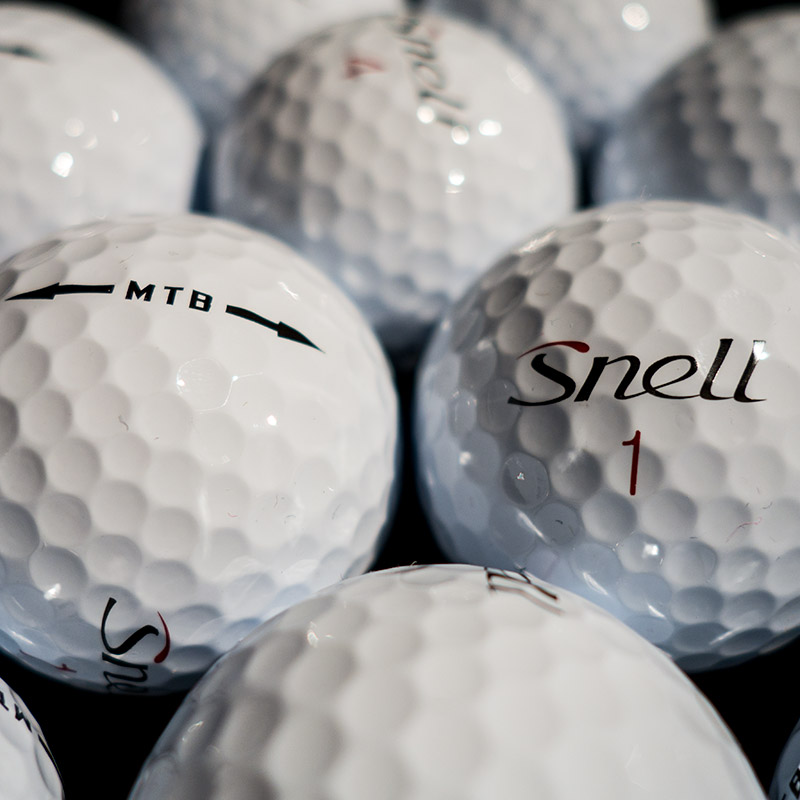
About the Snell Golf MTB
“Tour” is the word most commonly used for golf balls which have performance characteristics in line with what a PGA Tour professional would require. Those characteristics would include high spin and a soft cover, which aren’t necessarily characteristics which would benefit a high handicap golfer. Why? Pros can control their spin. High handicappers generally can’t. So the high ‘cappers will have serious distance loss due to side-spin, and will have very bad accuracy as the ball will be hooking or slicing more. Further, most higher handicap players come up short, and a ball that has high spin and stops quickly or even backs up on a green, isn’t good in that situation.
For the lower handicap players and pros though, the MTB is a very affordable and high performance alternative to the $50-$60 per dozen tour offerings from the big name brands. Let’s take a look at the construction of the ball.
MTB Construction
The MTB is a 3-piece or 3-layer golf ball. Each layer produces performance properties and when combined gives the ball it’s overall performance.
The first layer of the MTB if we go inside-out, is the core. Just like the earth’s core, the core on the MTB is the center. Most of the mass of the golf ball resides in the core and the ball’s general feel and “compression” comes from this layer. Softer cores result in lower spin, and therefore less side-spin. Soft cores can mean more accurate drives because of the reduced spin. But there’s a fine line with soft cores because as the core gets softer the distance is lessened. Snell’s MTB combines a soft core with technology which still helps produce the max ball speed allowed by golf’s governing bodies, and thus the most optimized combination of low driver spin and distance.
The mantle is the next layer. The mantle layer still has influence on the overall ball speed and compression. The mantle’s true performance benefits are in iron shots and short game shots. The mantle helps to increase spin as the shots get shorter, which is optimum. Low spin on long shots and higher spin on short shots.
The cover of the ball is perhaps the most crucial in terms of giving a golf ball the “tour” label. Tour balls typically have a “urethane” cover while cheaper balls may have covers made from other rubber/plastic materials like ionomer. Urethane gives a golf ball very soft feel in the short game and putting, and high spin on short shots, chips, and pitches. When you see tour pros “yank the cable” and spin a ball back to the crowd’s joy, that’s almost guaranteed a urethane cover ball. Pros and low-handicap golfers want the spin and control of urethane and the MTB has it.
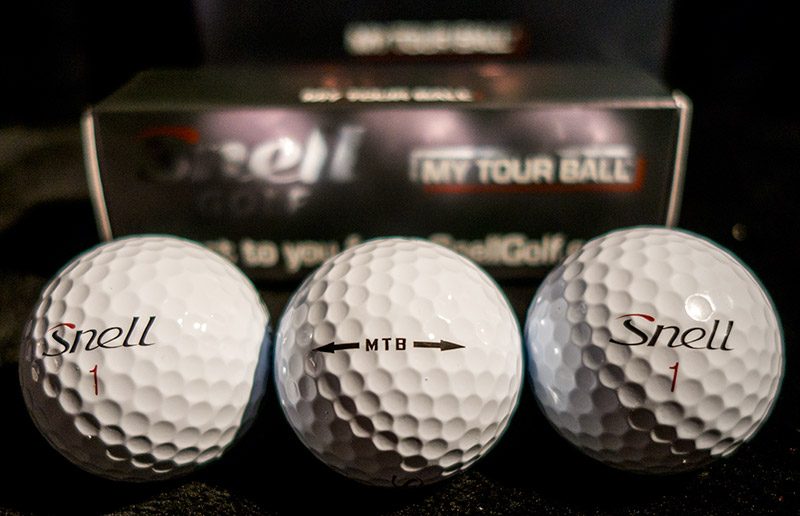
On The Course
I admit I’m a bit late to the party with my review. I actually received a box of MTB’s to try close to two years ago. At that time I was playing a different ball and didn’t want to change. A couple of years later I got some more and finally decided to play them again this season as my game was in such bad shape I needed a gear and mental overhaul.
From the tee the MTB is comparable to a tour ball such as the ProV1. This is bit more spin off the driver than balls I’ve tended toward in the past like the Bridgestone B330, and thus can be less accurate for me if my swing gets a little wild. I also find that extra spin results in a little shorter overall distance off the driver for me. These are the reasons I’d previously not opted to have the MTB as my “gamer” ball in the past. There have been a few occasions where all launch factors have been perfect and I’ve hit massively long drives with the MTB. Accidents happen. Blind squirrel syndrome. That said the ball is plenty long still and it does offer me the chance to “work the ball” (curve it) if I need to. Balls with less driver spin are harder to work.
Approach and in is where the MTB has made a big difference in my game. I’ve found my distance control has been much improved, though I must admit I also changed to different irons at the same time as my ball switch. Trust me on this. The irons are not an issue. I really love the feel of the ball off my irons and I’ve been gaining more and more confidence with each round. I’ve had some bad distance issues this season and when I made the iron and ball switch, those issues vanished.
I’m sticking approach shots now, even backing some up. Most recently I recall some very nice mid-to-long irons stopping on a dime, like a 6-iron I hit last weekend from about 185 yards. The ball mark was in the shadow of the ball. Mark first, then fix. Don’t accidentally move the ball when fixing the mark!
Short game shots are where the MTB really shines. My chipping and pitching (which I’ve whined about for a long time online) has been 1000x better. I’m actually saving par often now because I have better feel and control around the greens. I’m finally able to get the ball close enough to the hole to make a par-saving putt. In the case of par-5 holes, I’m chipping it close and making a 2-3 footer for birdie now. Huge difference on the scorecard.
I’m enjoying the feel of putting with the MTB as well. The urethane cover feels nice and soft and I have solid distance control. When I miss a putt (not often!), I know my next one is going to be very close. I like to “seam up” the MTB with it’s alignment arrows, which are also along the ball’s seam. That helps my alignment.
Last week I played 41 holes with the MTB. 13 holes were a net match and then an 18 hole round a couple of days later. Yes I trusted my net match outcome to the MTB and glad I did. I won the match. My total in relation to par over those 41 holes last week: +1.
Durability
Tour balls are typically not durable. It’s hard to make a all with a soft urethane cover which resists scuffs, but the MTB does a fine job of it. I expect a tour ball like this to last a round or two before I retire it to the practice ball bag, but the MTB’s are lasting longer than that.
Let’s do a little test. Which of the balls below has been in play for 36+ holes?
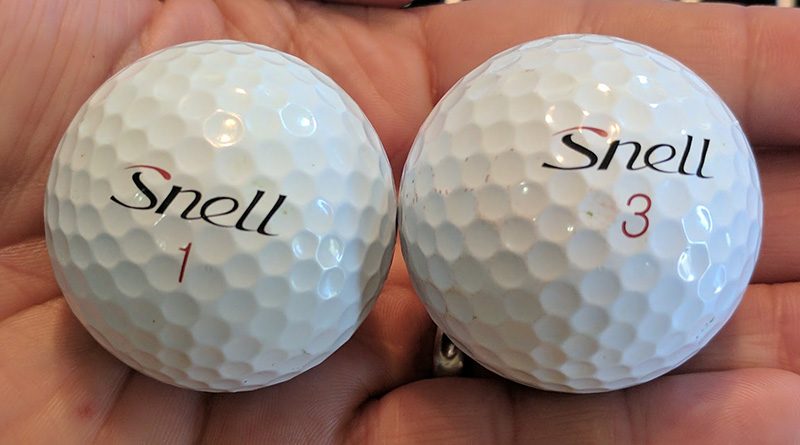
It’s a trick question. Both balls have been played over 36 holes.
Conclusion
At $31.99 via the Snell Golf website, these tour-level balls are roughly half the cost of some of the big name brand balls and offer comparable or even better performance. Call it a two-fer.
Nike 20XI-X Golf Ball Review
Categories: Golf Balls • Golf Equipment • Golf Gear • Reviews
Tags: Golf Ball • Nike Golf
Normally I like to get more holes under my belt with a golf ball before I review it. But by the first round I’ll almost always have reached my primary conclusions anyway. I’m speeding up the review process on the Nike 20XI-X golf ball because I can, and I want to beat everyone else to the scoop.
20XI-X Overview
The 20XI-X is one of two new balls Nike is releasing soon. The 20XI-X or what I call the “X” version, is the longer, distance ball. The 20XI-S (“S” version) is the spin/control version.
Srixon Z-Star Tour Yellow
Categories: Golf Balls • Golf Equipment • Golf Gear • Reviews
Tags: Golf Ball • Srixon • Tour Yellow • Z-Star
 My last 10 rounds or so I’ve been testing out the new Tour Yellow Srixon ZStar. I’ve gotten some interesting comments from other golfers about playing a yellow ball. Some think it is cheesy and ask me why I’m playing a range ball on the course and some say it looks cool. The ball itself is very highly visible and bright, and especially easy to see on the course. The one guy who made fun of it two days ago was thinking otherwise when I shot a 73 with the thing for my first round of the year at his club.
My last 10 rounds or so I’ve been testing out the new Tour Yellow Srixon ZStar. I’ve gotten some interesting comments from other golfers about playing a yellow ball. Some think it is cheesy and ask me why I’m playing a range ball on the course and some say it looks cool. The ball itself is very highly visible and bright, and especially easy to see on the course. The one guy who made fun of it two days ago was thinking otherwise when I shot a 73 with the thing for my first round of the year at his club.
Is there something to the color?
This ball isn’t just yellow. It is green, yellow and looks to have some sort of metallic looking flakes or crystal in there. The ball is highly reflective. It is much easier to spot this ball from 200 out than a white ball and Srixon actually has factual data to back that up. According to them, yellow is the most visible color in the visual spectrum. I’m sure they didn’t realize how redundant that statement is, because I’m sure there isn’t a “most visible color not in the visible spectrum.” Ahem. (more…)
Bridgestone e6 Straight Golf Ball
Categories: Golf Balls • Golf Equipment • Golf Gear • Reviews
Tags: Bridgestone • Golf Ball
 So it is January 6, 2010. I can’t quite remember the last time I hit a golf ball. Wait, it is coming back to me. It was last year, December 21st. For me to go 16 days without playing golf is like Obama going 29 seconds without saying the word “change.” It is like JD going 12 minutes without a beer, TW going two hours without… oh boy. Nevermind.
So it is January 6, 2010. I can’t quite remember the last time I hit a golf ball. Wait, it is coming back to me. It was last year, December 21st. For me to go 16 days without playing golf is like Obama going 29 seconds without saying the word “change.” It is like JD going 12 minutes without a beer, TW going two hours without… oh boy. Nevermind.
For my last few rounds before Antarctica struck (and don’t get me started on the global warming farce because I’m freezing my golf balls off right now) I played with the new Bridgesone e6 Straight golf ball. Straight is a good thing on my home course, because left is hazard and right is hazard. Well, short is hazard and long is hazard too but I can hit a straight ball right into a water hazard short.
Should I start over? I feel like I’m twisting my own brain into a pretzel. How one twists three braincells (the max my cranium can hold) into a pretzel is another story… Think my medication prescription ran out? Nope, it is just winter here. And winter sucks because I can’t golf.
e6 Straight
OK I have to ask before I do my e6 “Straight” overview. Is there an e6 “gay” or as I prefer to say in a more politically correct manner, “e6 heterosexually challenged?”
Thank you very much. I’ll be here all weekend.
OK I promise I’ll be good… (more…)
1 2 3 Next »

